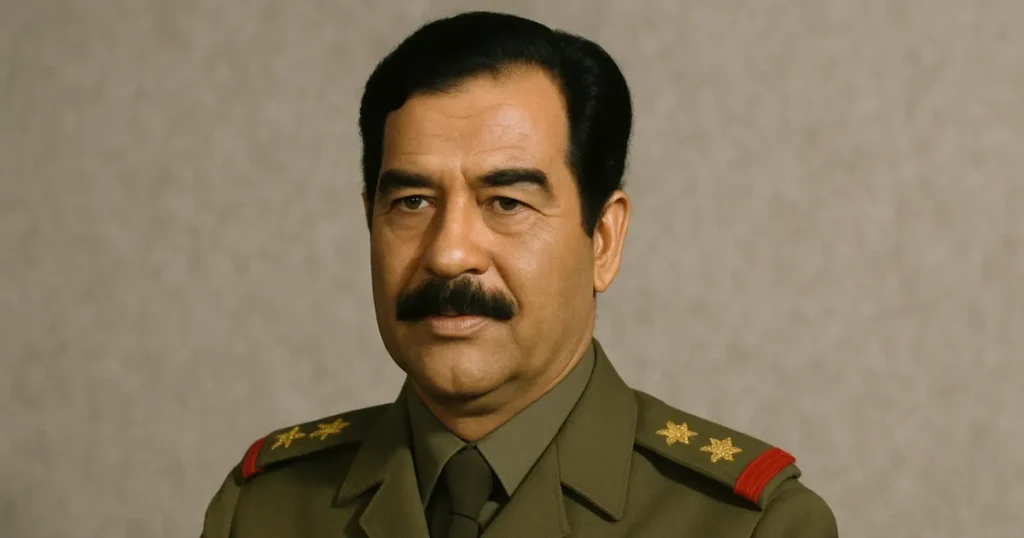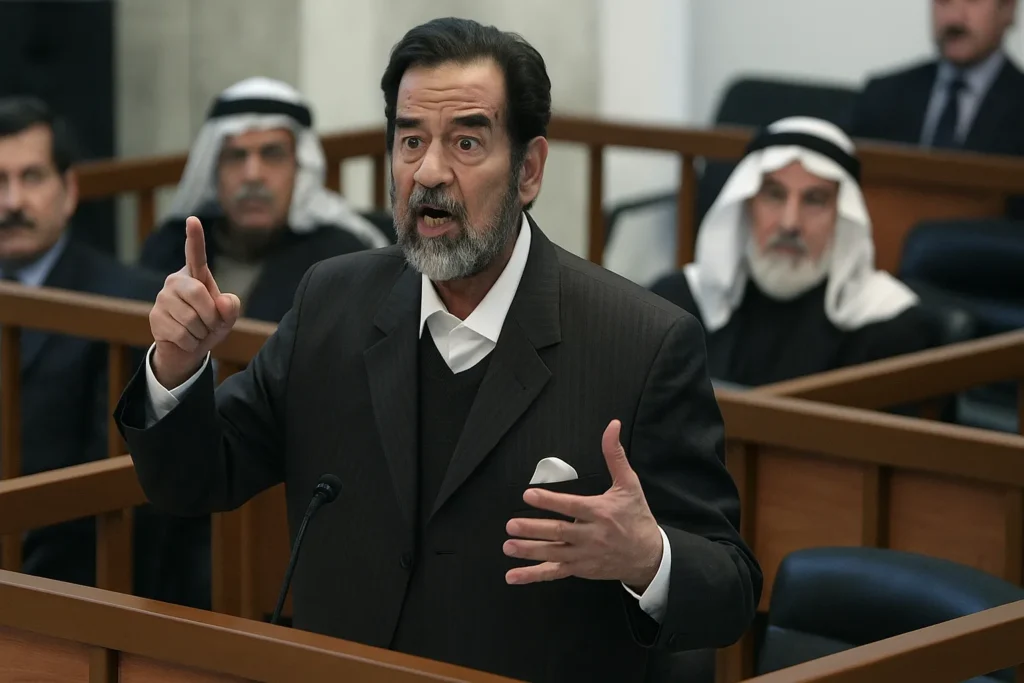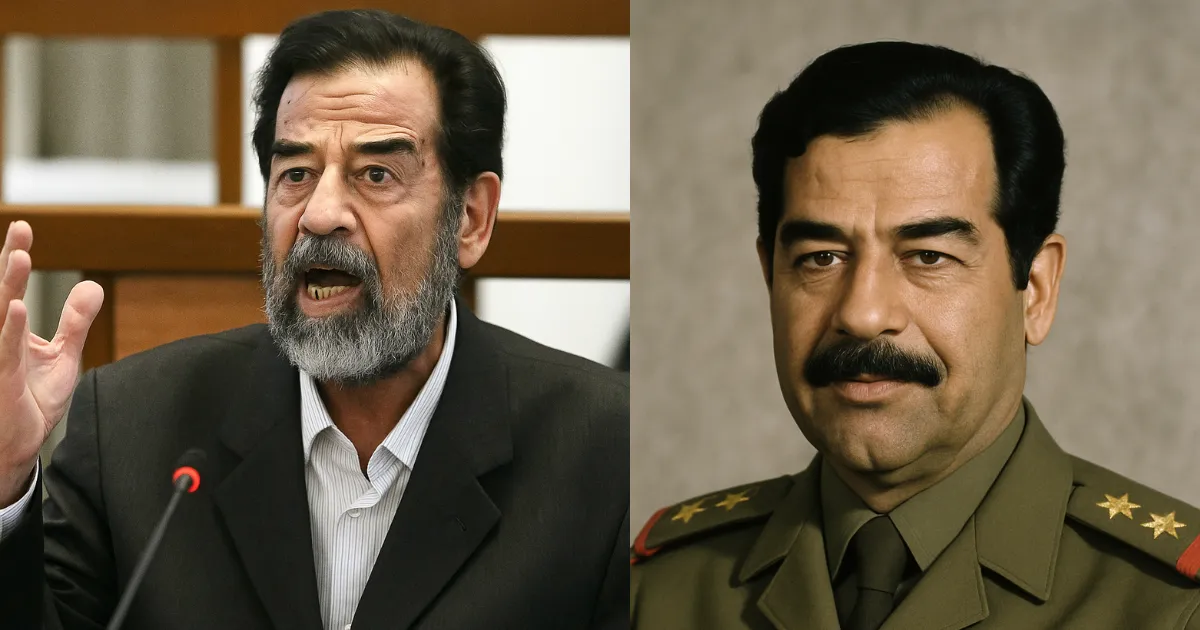Saddam Hussein, The Truth Behind Iraq’s Most Controversial Leader
Exploring Saddam Hussein’s rule reveals a complex legacy, combining modernization, controversy, and deep national wounds that are still discussed across Iraq.
Baghdad, Iraq – Saturday, July 19, 2025, 1:56 PM IST – In the heart of Iraq, the name Saddam Hussein continues to evoke strong reactions more than 20 years after his fall. What was the reality of Saddam Hussein’s leadership? What did his legacy leave behind for Iraq, and how is the country grappling with the aftermath today? As history’s lens refocuses on his time in power, new voices, expert analyses, and public responses shed light on what really happened—and what it means for Iraq now.
Who Was Saddam Hussein? What Did He Do?
Saddam Hussein, born in 1937 in Tikrit, Iraq, ruled Iraq as president from 1979 to 2003. Taking full control of the Ba’ath Party and the country with an iron fist, Saddam’s leadership became synonymous with both rapid modernization and ruthless repression.
He nationalized Iraq’s oil in the 1970s, bringing sudden and significant wealth, which he used to develop infrastructure, education, and healthcare. Baghdad flourished under wide, palm-lined boulevards and newly built universities.
But behind the promises of progress was a legacy of fear. Dissent, even among his political allies, was brutally crushed. “He was capable of extraordinary charisma and vision, but his appetite for power and control had no limit,” explained Dr. Ameen al-Khalil, a Baghdad University historian. Under Saddam’s direction, the regime operated a vast security apparatus, leading to thousands of imprisonments, executions, and forced exiles.

When and Where Did Saddam’s Power Peak?
By the early 1980s, Saddam Hussein’s power peaked. Iraq’s oil revenue soared, funding modernization unseen in the country’s history. This period saw hospitals, roads, and schools built at unprecedented speed.
Yet this golden age was short-lived. In 1980, Saddam wagered it all in a war with neighboring Iran, hoping to be seen as a regional hero. The Iran-Iraq War lasted eight years, costing more than a million lives and decimating Iraq’s economy.
Even during war, Saddam maintained a tight grip in Baghdad and across the provinces. Surveillance and secret police were omnipresent. His carefully crafted image—portraits, statues, and slogans—became inescapable.
Why Did Saddam’s Leadership Become So Controversial?
Saddam Hussein’s legacy is soaked in paradox. While some Iraqis remember him as the man who kept electricity running and the streets safe from crime, many recall the fear and violence that shaped daily life. Some of Hussein’s darkest chapters include:
- The Anfal Campaign (1986-1989): A military campaign against Iraq’s Kurdish minority, featuring chemical attacks, mass killings, and village destruction.
- 1991 Shia Uprising Suppression: Brutal crackdowns in Basra, Najaf, and Karbala following the Gulf War.
- Widespread Surveillance: Ordinary citizens lived in fear of informing and arrest.
Internationally, Saddam’s 1990 invasion of Kuwait united world powers against him and led to the 1991 Gulf War. Years of harsh sanctions followed, plunging Iraq’s society into hardship and scarcity. Hussein’s refusal to fully comply with United Nations inspections after the Gulf War left Iraq isolated on the world stage.
Dr. Lina Saeed, Middle East analyst, notes, “Iraqis paid a heavy price for Saddam’s passion for power. There’s still a generation living with the trauma of those years.”
The Fall of Saddam Hussein: What Happened?
In March 2003, the US and a coalition of allies invaded Iraq, accusing Saddam of hiding weapons of mass destruction (WMDs) and supporting terrorism. Baghdad fell in April, and after months in hiding, Saddam was captured north of his hometown Tikrit in December 2003.

His trial for crimes against humanity was televised, a symbol of a new era for Iraq. Saddam was executed by hanging in late 2006. Yet, his shadow remains—visible in stories, politics, and memorials across Iraq.
How Do Iraqis Feel About Saddam Hussein Today?
Iraq is split on Saddam Hussein’s historical reality. Some feel his era brought order and stability, with regular salaries and functioning state services. But for survivors of war, repression, and ethnic cleansing, he is remembered as a symbol of brutality.
Read more: Bold Heroes Who Founded Indian National Army Revealed
Baghdad shopkeeper Hatem al-Hashimi said, “Under Saddam, you paid a price for saying the wrong word. But life was organized, and public services worked.” Meanwhile, Najaf resident Suha al-Tamimi, who lost relatives during the 1991 uprising, replied bitterly, “Order cannot be built on blood. We still grieve.”
The divide often runs along generational and ethnic lines. Victims’ families continue to seek justice, while others focus on the chaos and corruption that followed his fall.
How Did Saddam Hussein Shape Iraq’s Present?
Saddam Hussein’s reign changed Iraq’s DNA. His wars drained the nation’s wealth and divided communities. State power was centralized, but it left behind weak institutions reliant on loyalty over competence.
“His use of fear and reward dismantled tribal boundaries but replaced them with brittle, top-down authority,” observed Dr. Nassar Jafaar, a political science professor. “These patterns still influence Iraqi politics—people prefer strongmen because the old system didn’t allow healthy opposition.”
After Saddam, Iraq faced sectarian conflict, terrorism, and leadership struggles. The chaos of the post-2003 era, marked by bombings and political fragmentation, partly traces back to the structures and attitudes built during Saddam’s time.
FAQs – Saddam Hussein: What People Want to Know
Who was Saddam Hussein?
Saddam Hussein was the president of Iraq from 1979 to 2003, known for both advancing Iraq’s modernization and for his ruthless, authoritarian policies.
What made Saddam Hussein controversial?
His use of extreme violence against opponents, ethnic minorities, and his pursuit of costly wars made his leadership deeply divisive, both at home and abroad.
How did Saddam Hussein stay in power?
He controlled a powerful security network, suppressed dissent, and built a cult of personality through propaganda and harsh punishments.
When did Saddam Hussein’s rule end?
His government was toppled in 2003 during the US-led invasion, and he was executed in 2006 after being found guilty of crimes against humanity.
What is Saddam Hussein’s legacy today?
Saddam’s legacy is mixed: some recall stability and national pride, while others remember terror, loss, and the lingering challenges his rule created for Iraqi society.
Saddam Hussein’s reality—the good, the bad, and the tragic—remains part of Iraq’s living history. As the country builds its future, honest conversations about his time in power are essential. Stay tuned for ongoing coverage and expert analysis on how post-Saddam Iraq is shaping its path forward.
If you have a story or a viewpoint to share about Saddam Hussein’s era, contact our newsroom in Baghdad. Voices from every corner of Iraq are crucial to understanding the true reality of Saddam Hussein and the country he ruled.

